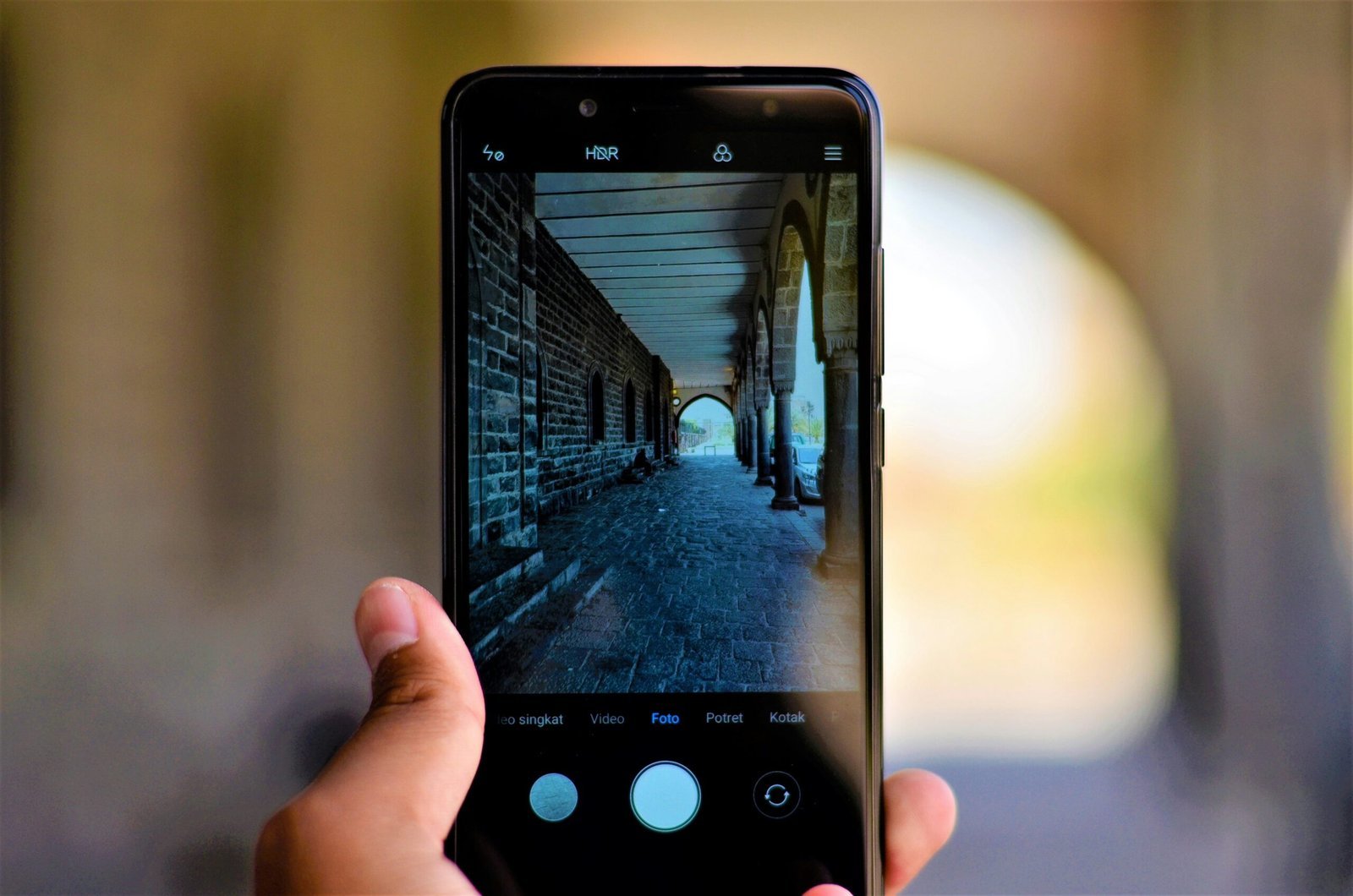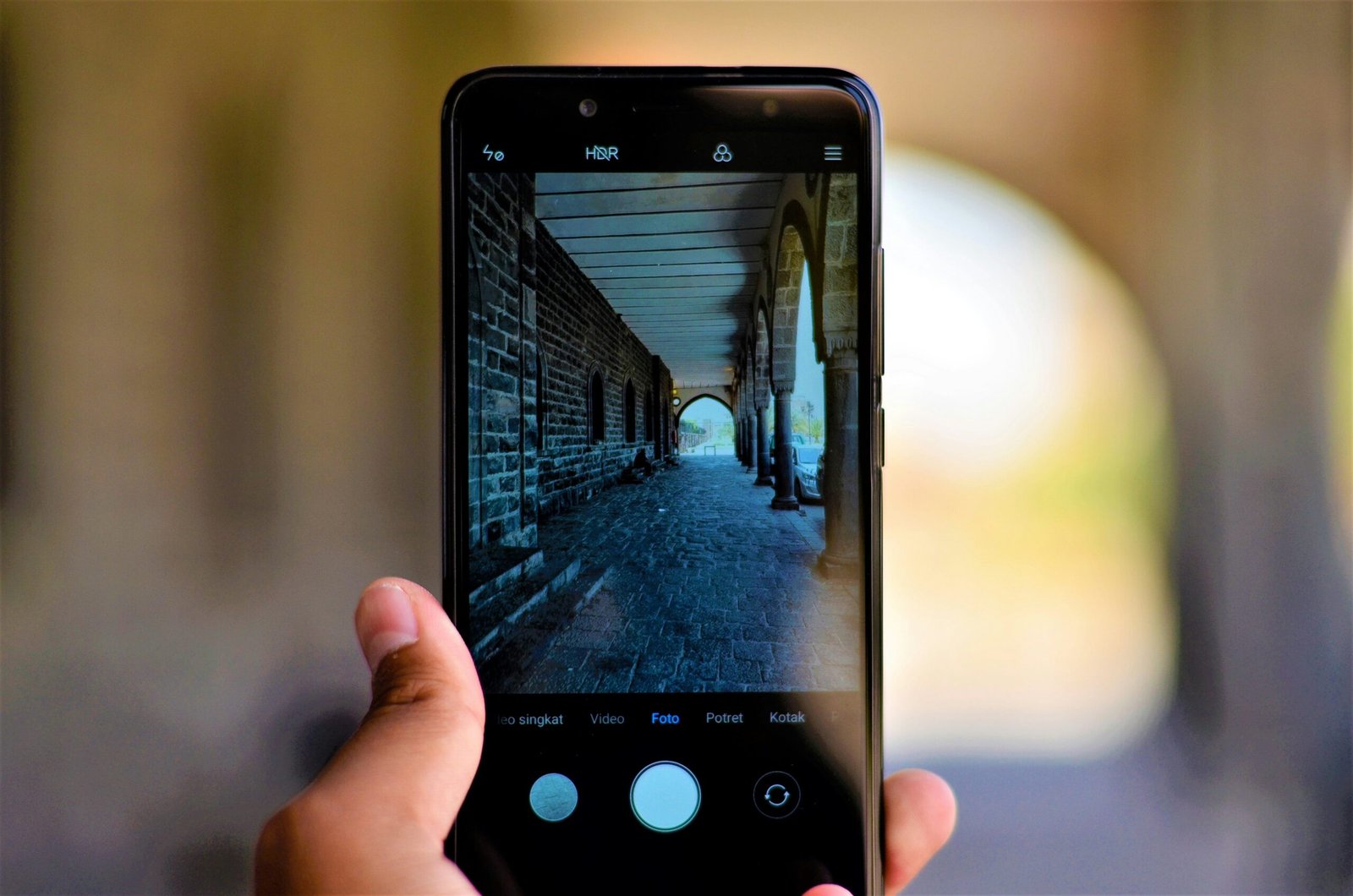
Introduction to the Technological Wonderland
Technology has evolved at an unprecedented pace, weaving its way into every facet of our daily existence. From the early days of simple mechanical tools to the complex digital ecosystems we navigate today, technology has been a relentless force of change. This transformative power has not only streamlined mundane tasks but has also turned ordinary experiences into extraordinary adventures.
Consider, for instance, the revolution of communication. With the advent of smartphones and instant messaging apps, the world has shrunk to fit into our pockets. Video calls allow us to see and speak to loved ones across continents in real-time, making geographical barriers almost obsolete. Similarly, the rise of smart home devices has turned daily routines into seamless, automated experiences. Imagine waking up to a home that adjusts the thermostat, brews your coffee, and plays your favorite morning playlist—all without you lifting a finger.
The entertainment industry has also seen a dramatic transformation. Virtual reality (VR) and augmented reality (AR) have created immersive experiences that were once the stuff of science fiction. Whether it’s exploring distant planets from your living room or transforming your backyard into a prehistoric jungle, these technologies have redefined what it means to be entertained.
In the realm of healthcare, technological advancements have made significant strides. Wearable devices monitor our vital signs, AI algorithms assist in diagnosing diseases, and telemedicine allows us to consult with healthcare professionals from the comfort of our homes. These innovations not only enhance our quality of life but also make healthcare more accessible and efficient.
These examples merely scratch the surface of how technology has and continues to evolve, turning the ordinary into the extraordinary. As we delve deeper into this blog post, we’ll explore the myriad ways technology continues to shape our world, making it a true wonderland of possibilities.
Smart home technology has significantly transformed our living spaces, elevating them from basic living quarters to futuristic abodes. This revolution is driven by a range of innovative devices designed to enhance convenience, security, and energy efficiency. One notable example is the smart thermostat, which allows homeowners to adjust temperature settings remotely via a smartphone app. This not only ensures optimal comfort but also contributes to substantial energy savings by optimizing heating and cooling schedules based on occupancy patterns.
Voice-activated assistants, such as Amazon Alexa and Google Assistant, have become integral components of smart homes. These devices enable users to control various aspects of their environment, from playing music to controlling smart appliances, simply by issuing voice commands. The convenience offered by these assistants extends to managing daily routines, setting reminders, and even providing weather updates, all without lifting a finger.
Automated lighting systems represent another leap forward in smart home technology. These systems can adjust lighting based on the time of day, occupancy, or even personal preferences, creating an ideal ambiance while conserving energy. For instance, lights can be programmed to dim gradually in the evening to promote relaxation or to turn off automatically when no one is in the room, thereby reducing unnecessary electricity consumption.
Smart fridges exemplify the integration of technology into everyday household appliances. These refrigerators come equipped with internal cameras and inventory tracking, allowing users to check the contents remotely via their smartphones. Some models go a step further by suggesting recipes based on the available ingredients, streamlining meal planning and reducing food waste.
The security aspect of smart homes is equally impressive. Devices such as smart locks, video doorbells, and security cameras provide homeowners with real-time surveillance and control over who enters their property. These systems can send instant notifications in case of suspicious activities, enhancing the overall safety of the household.
In summary, smart home technology has undeniably revolutionized our living spaces, offering unparalleled convenience, enhanced security, and significant energy efficiency. As these technologies continue to evolve, the possibilities for creating increasingly intelligent and responsive living environments are virtually limitless.
Wearable Tech: Personal Gadgets That Enhance Our Lives
Wearable technology has transformed the way we interact with our environment and manage our personal well-being. From fitness trackers to smartwatches, these devices have become integral components of our daily lives. Fitness trackers, for instance, have revolutionized how we monitor our health by providing real-time data on steps taken, calories burned, and even sleep patterns. These insights empower users to make informed decisions about their lifestyle and fitness goals, promoting a more proactive approach to health management.
Smartwatches have taken connectivity a step further by integrating communication features that keep us connected, even on the go. With the ability to receive notifications, make calls, and send messages directly from our wrists, smartwatches offer unparalleled convenience. They also boast a range of functionalities, such as GPS tracking, heart rate monitoring, and even ECG capabilities, making them versatile tools for both fitness enthusiasts and everyday users.
Beyond the conventional, cutting-edge wearables like smart glasses and health-monitoring clothing are pushing the boundaries of what’s possible. Smart glasses, for example, provide augmented reality experiences, enhancing both productivity and entertainment. Meanwhile, health-monitoring clothing equipped with sensors can track vital signs, offering a new dimension of health awareness. These innovations not only provide new ways to interact with our surroundings but also contribute significantly to our overall well-being.
The impact of wearable technology on personal well-being and lifestyle is profound. By offering seamless integration of health monitoring and connectivity, these devices encourage users to adopt healthier habits and stay connected with the world around them. As technology continues to evolve, the potential for wearable tech to further enhance our lives is limitless, promising a future where the ordinary becomes truly extraordinary.
Virtual Reality: Immersive Experiences Beyond Imagination
Virtual Reality (VR) has redefined the boundaries of what is possible, transcending the traditional confines of reality to offer immersive experiences that were once the stuff of science fiction. In the realm of entertainment, VR gaming stands as a testament to this transformation. Players can step into the shoes of their favorite characters, engaging in adventures that are as exhilarating as they are visually stunning. Titles like Beat Saber and Half-Life: Alyx have set new standards for interactive entertainment, showcasing the potential of VR to deliver unparalleled sensory engagement.
Beyond entertainment, VR has also made significant strides in the field of education. Virtual tours allow students to explore historical sites, museums, and even outer space without leaving the classroom. Platforms like Google Expeditions enable educators to take their students on immersive journeys, fostering a deeper understanding of complex subjects through experiential learning. This method not only enhances retention but also sparks curiosity and engagement.
In the professional sphere, VR is revolutionizing training programs across various industries. Medical professionals, for instance, can practice intricate surgical procedures using VR simulations before performing them on actual patients. This not only hones their skills but also reduces the risk of errors during real operations. Similarly, pilots undergo flight simulations in VR to experience and react to a wide array of scenarios, ensuring they are well-prepared for real-world challenges.
The transformative power of VR extends to therapeutic applications as well. Virtual environments are being used in mental health treatments, helping patients confront and manage conditions such as PTSD and anxiety through controlled exposure therapy. This innovative approach demonstrates the broad utility of VR, proving its potential to improve lives in myriad ways.
As VR technology continues to evolve, its applications will undoubtedly expand, offering new and exciting possibilities. From gaming and education to professional training and therapy, VR is turning the ordinary into the extraordinary, reshaping our experiences and interactions with the world around us.
Augmented Reality: Blending the Digital with the Real World
Augmented Reality (AR) is a transformative technology that seamlessly integrates digital elements into our physical world, enhancing how we perceive and interact with our environment. Unlike virtual reality, which creates a completely immersive digital experience, AR overlays digital information onto the real world, creating a hybrid experience that combines the best of both realms.
One of the most notable applications of AR is in interior design. AR apps allow users to visualize how furniture and decor will look in their homes before making a purchase. By using a smartphone or tablet, users can place virtual furniture in their actual living spaces, adjusting size, color, and orientation to find the perfect fit. This not only enhances the shopping experience but also reduces the likelihood of returns and dissatisfaction.
In the field of navigation, AR has revolutionized the way we find our way around. AR navigation apps can overlay directions onto the real world, making it easier to follow routes and find destinations. For instance, Google Maps’ AR feature uses the camera to provide real-time, on-screen directions, highlighting the correct paths and landmarks. This is especially useful in complex urban environments where traditional maps may be challenging to interpret.
Interactive gaming is another area where AR has made a significant impact. The global phenomenon Pokémon GO is a prime example. This game uses AR to place virtual creatures in real-world locations, encouraging players to explore their surroundings in search of Pokémon. The success of Pokémon GO has demonstrated the potential of AR to create engaging and immersive gaming experiences that blend the digital with the physical world.
Overall, AR is a powerful tool that enhances our interaction with the world by providing additional layers of information and interactivity. As AR technology continues to evolve, we can expect even more innovative applications that will further enrich our everyday lives.
Artificial Intelligence (AI) and machine learning are revolutionizing the way we approach everyday tasks and industries. These technologies are not just buzzwords; they are integral components driving efficiency and innovation across various sectors. From AI-powered assistants to advanced recommendation systems, AI and machine learning are making our lives easier and more streamlined.
AI-Powered Assistants
AI-powered assistants like Siri, Alexa, and Google Assistant have become commonplace in many households. These virtual assistants help users with tasks ranging from setting reminders to controlling smart home devices. By leveraging natural language processing and machine learning algorithms, these assistants can understand and respond to user queries, making daily routines more manageable.
Recommendation Systems
Another significant application of AI is in recommendation systems. Companies like Netflix and Amazon use machine learning algorithms to analyze user behavior and preferences, providing personalized recommendations for movies, products, and more. This not only enhances user experience but also drives customer engagement and loyalty.
Predictive Analytics
Predictive analytics, powered by AI, is transforming industries by providing actionable insights. In healthcare, AI algorithms analyze patient data to predict potential health issues, enabling early intervention and personalized treatment plans. Similarly, in personalized marketing, AI analyzes consumer data to predict purchasing behavior, allowing businesses to tailor their marketing strategies effectively.
AI in Customer Service
AI is also making significant strides in customer service. Chatbots and virtual customer assistants are becoming more sophisticated, providing instant responses and solutions to customer inquiries. This not only improves customer satisfaction but also reduces the workload on human agents, allowing them to focus on more complex issues.
Healthcare Diagnostics
In healthcare, AI is revolutionizing diagnostics by analyzing medical images and patient data with unprecedented accuracy. AI-driven tools can detect anomalies and assist doctors in making more accurate diagnoses, leading to better patient outcomes.
Overall, AI and machine learning are creating smarter solutions that enhance efficiency and effectiveness across various domains. As these technologies continue to evolve, their impact on our daily lives and industries will only grow, turning the ordinary into the extraordinary.
The Future of Transportation: From Self-Driving Cars to Hyperloops
Technological advancements are set to revolutionize the transportation sector, bringing innovations that will transform the way we travel. At the forefront of this change are self-driving cars. Utilizing sophisticated algorithms and sensor technology, these autonomous vehicles promise to significantly reduce traffic accidents caused by human error. Companies like Tesla, Waymo, and Uber are already conducting trials and deploying fleets of self-driving cars in various cities worldwide, offering a glimpse into a future where commuting becomes safer and more efficient.
Electric vehicles (EVs) represent another leap forward in transportation technology. With zero-emission engines, EVs contribute to a reduction in air pollution and dependence on fossil fuels. The growing network of charging stations and advancements in battery technology are making electric cars more accessible and practical for everyday use. Major automotive manufacturers are investing heavily in EVs, highlighting a shift towards a more sustainable future. Notable projects include the widespread adoption of EVs in Norway and California’s ambitious plan to phase out gasoline-powered cars by 2035.
Beyond cars, futuristic concepts like the Hyperloop are pushing the boundaries of what’s possible in transportation. Proposed by Elon Musk, the Hyperloop envisions a system of high-speed pods traveling through low-pressure tubes at speeds exceeding 700 mph. This technology could drastically cut travel times between cities, making long-distance commutes feasible and efficient. Current projects, such as Virgin Hyperloop’s successful passenger test in 2020, indicate that this revolutionary mode of transport may soon become a reality.
These advancements present numerous benefits. Reduced traffic accidents, lower emissions, and faster travel times are just a few of the advantages. As these technologies continue to develop and integrate into our daily lives, the ordinary act of traveling will be transformed into an extraordinary experience, reshaping our cities and how we connect with one another.
Conclusion: Embracing the Extraordinary in Everyday Life
Throughout this blog post, we have explored the myriad ways in which technology permeates our daily existence, transforming the mundane into the remarkable. From the seamless integration of smart home devices that enhance convenience and security, to the revolutionary advancements in healthcare that improve our quality of life, technology has become an indispensable part of our world. The rapid evolution of communication tools has bridged gaps, enabling connections across vast distances, while innovations in transportation have redefined mobility, making travel more efficient and accessible.
These technological advancements not only simplify our routines but also open doors to new possibilities, fostering creativity and innovation. As we continue to witness the emergence of artificial intelligence, augmented reality, and other groundbreaking technologies, it is clear that the potential for further transformation is immense. By embracing these changes, we can harness the power of technology to enhance our personal and professional lives, fostering growth and development in ways previously unimaginable.
As we look to the future, it is essential to remain open to the endless opportunities that technology presents. By staying informed and adaptable, we can leverage these advancements to create a more connected, efficient, and extraordinary world. The journey of technological progress is ongoing, and its potential to enrich our lives is boundless.
Ultimately, the wacky and wonderful ways technology affects our lives serve as a testament to human ingenuity and the relentless pursuit of improvement. By embracing these innovations, we not only enhance our own experiences but also contribute to a future where the extraordinary becomes the norm. Let us continue to explore, innovate, and adapt, as we navigate the ever-evolving landscape of technology and its profound impact on our daily lives.




